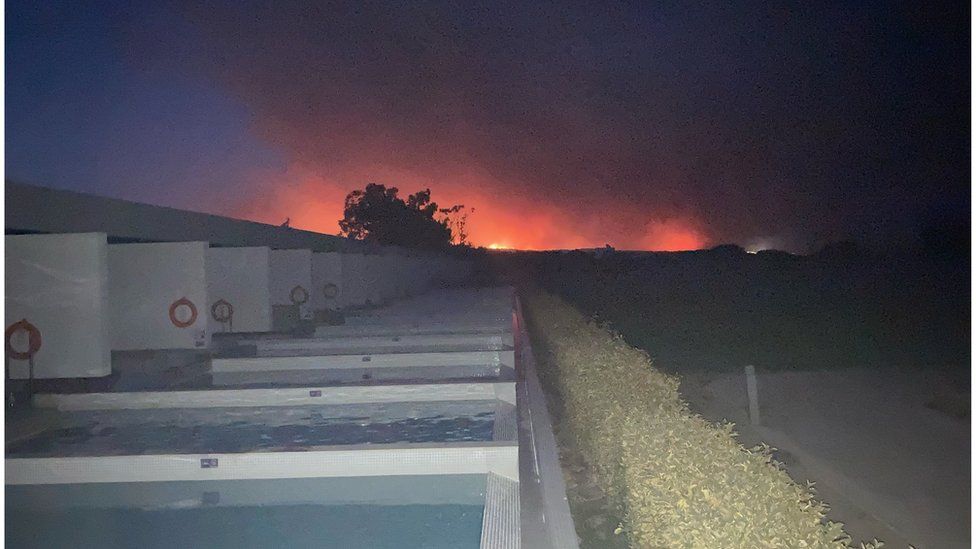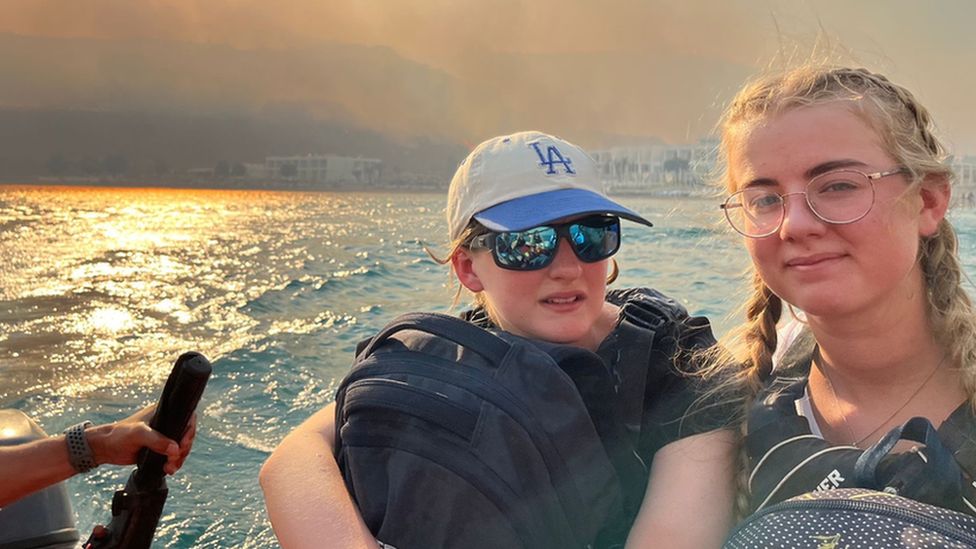Anxiety and resentment have been raised both at home and abroad in response to Japan's controversial plan to release treated waste water from the Fukushima nuclear plant.
There has been an accumulation of more than a million tonnes of treated waste water since the 2011 tsunami, which severely damaged the plant. Now, Japan wants to begin releasing it into the Pacific.
The International Atomic Energy Agency (IAEA), the UN's nuclear watchdog, has released a report endorsing Japan's proposal.
However, the plan has been highly contentious in Japan since it was first announced two years ago, with local communities raising worries about contamination.
Groups in the fishing and seafood industries in Japan and the rest of the region have also expressed worries about their livelihoods because they think consumers won't buy seafood.
Additionally, Tokyo's neighbors are not pleased. The loudest critic of Japan has been China, who calls the ocean its "private sewer.". It criticized the IAEA report on Tuesday, claiming that its conclusions were "one-sided.".
What exactly is Japan's strategy, and how has it agitated the waters?
Tepco, the operator of the Fukushima nuclear reactors, has been pumping water into the reactors ever since the accident to cool the fuel rods. This indicates that the plant generates contaminated water every day, which is kept in sizable tanks.
Japan claims that even after more than 1,000 tanks have been filled, this is not a long-term, viable solution. It claims that this water can be safely discharged, and it wants to release it into the Pacific Ocean over the course of the next 30 years.
Nuclear power plants routinely discharge treated waste water into the ocean, but because this waste is the result of an accident, it is not typical nuclear waste.
With the exception of tritium and carbon-14, Tepco's Advanced Liquid Processing System (ALPS) filters the water from Fukushima to reduce the majority of radioactive elements to acceptable safety levels.
Radioactive forms of hydrogen and carbon, tritium and carbon-14, are both difficult to separate from water. Since they are created in the Earth's atmosphere and can enter the water cycle, they are widely present in the natural environment, water, and even people.
Both produce very little radiation but can be harmful if consumed in large amounts.
Before being discharged into the ocean, the filtered water undergoes another treatment and is diluted with seawater to lower the concentrations of any remaining contaminants. Tepco claims that its valve system will prevent any undiluted waste water from being unintentionally released.
According to the Japanese government, the final tritium concentration, which is around 1,500 becquerels per litre, is much safer than the levels demanded by authorities for the disposal of nuclear waste or by the WHO for drinking water. According to Tepco, the carbon-14 level complies with standards.
Studies carried out by Tepco and the Japanese government demonstrate that there is little risk to marine life and humans from the discharged water.
The plan has also received support from many scientists. Both in terms of volume and radioactivity, the water that is released will be a drop in the ocean. There is no proof that these extremely low radioisotope exposure levels are harmful to human health, according to molecular pathology expert Gerry Thomas, who collaborated with Japanese radiation researchers on radiation research and provided advice to the IAEA on the Fukushima reports.
Environmental activists and UN-appointed human rights experts both oppose the plan. Greenpeace has published reports questioning Tepco's treatment method, claiming it falls short in its removal of radioactive materials.
According to critics, Japan should temporarily keep the treated water in the tanks. They contend that doing so buys time for the development of new processing technologies and permits any radioactivity to naturally diminish.
Additionally, a few scientists are uneasy about the strategy. More research is needed, according to some, to determine how it will impact marine life and the ocean floor.
As a result of the insufficient radiological and ecological impact assessment, we are extremely concerned that Japan will not only be unable to detect what is contaminating the water, sediment, and organisms, but also that there will be no way to have it removed if it does. Robert Richmond, a marine biologist and professor at the University of Hawaii, told the BBC's Newsday program that it was impossible to put the genie back in the bottle.
Professor of nuclear engineering Tatsujiro Suzuki from Nagasaki University's Research Center for Nuclear Weapons Abolition told the BBC that if all goes well, the plan "won't necessarily result in serious pollution or readily harm the public.".
But given that Tepco was unable to stop the 2011 disaster, he said he was still worried about a possible unintentional release of contaminated water.
China has demanded that before releasing the water, Japan come to an agreement with other nations in the region and with international organizations.
Tokyo has also been charged with breaking "international moral and legal obligations," and Beijing has threatened to hold it accountable if the plan moves forward.
Tensions between the two nations are currently high as a result of China's provocative actions surrounding Taiwan and Japan's recent military buildup.
Tokyo has held discussions with its neighbors and welcomed a team of South Korean experts to tour the Fukushima plant in May. However, it is unclear how far it will go to secure the support of its neighbors before moving forward with the plan.
In contrast to China, Seoul has downplayed its worries and stated on Tuesday that it "respects" the IAEA's findings. Seoul has been eager to forge relationships with Japan.
However, this strategy has infuriated the South Korean populace, who, according to a recent poll, are 80 percent concerned about the water release.
South Korean fisherman Park Hee-jun told BBC Korean, "The government enforces a strict no-littering policy at sea... But now the government is not saying a word (to Japan) about the wastewater flowing into the ocean.".
Some of the officials advise us to keep quiet if we don't want to exacerbate consumer anxiety. I find that to be absurd. ".
As some shoppers stockpiled salt and other necessities out of concern for disruptions in the food supply, thousands attended protests in Seoul calling on the government to take action.

Although it is unclear how this will affect Japan's choice, South Korea's parliament passed a resolution last week opposing the water release plan in response. Additionally, authorities are launching "intense inspections" of seafood and maintaining the current ban on the importation of Japanese seafood from areas near the Fukushima nuclear power plant.
While one official claimed last week that only a small portion of the discharge would end up in Korean waters, prime minister Han Duck-soo said he would be willing to drink the Fukushima water to prove it is safe.
Several island nations in other parts of the region have also voiced their concerns, with the Pacific Islands Forum calling the proposal yet another "major nuclear contamination disaster.".
Prime Minister Fumio Kishida pledged on Tuesday that Japanese authorities and Tepco would continue to explain the science behind the treatment process to critics with "a high level of transparency.".
Japan also noted that other nuclear plants in the region, particularly those in China, discharge water with significantly higher levels of tritium in materials posted on the website of its foreign affairs ministry. With the help of publicly available data from Chinese nuclear plants, the BBC was able to confirm some of these figures.
However, the IAEA report, which was issued by the organization's director Rafael Grossi while in Japan, may provide the greatest justification.
The report, which was the result of a two-year investigation, examined whether Tepco and the Japanese government were upholding various international safety standards, including those relating to facilities, inspections and enforcement, environmental monitoring, and radioactivity assessments.
The plan would have a "negligible radiological impact on people and the environment," according to Mr. Grossi's statement on Tuesday.
According to some reports, Japan could begin releasing the Fukushima water as early as August after receiving approval from the international nuclear watchdog, setting the stage for a more heated debate with its detractors.
Chika Nakayama and Yuna Kim contributed additional reporting.







